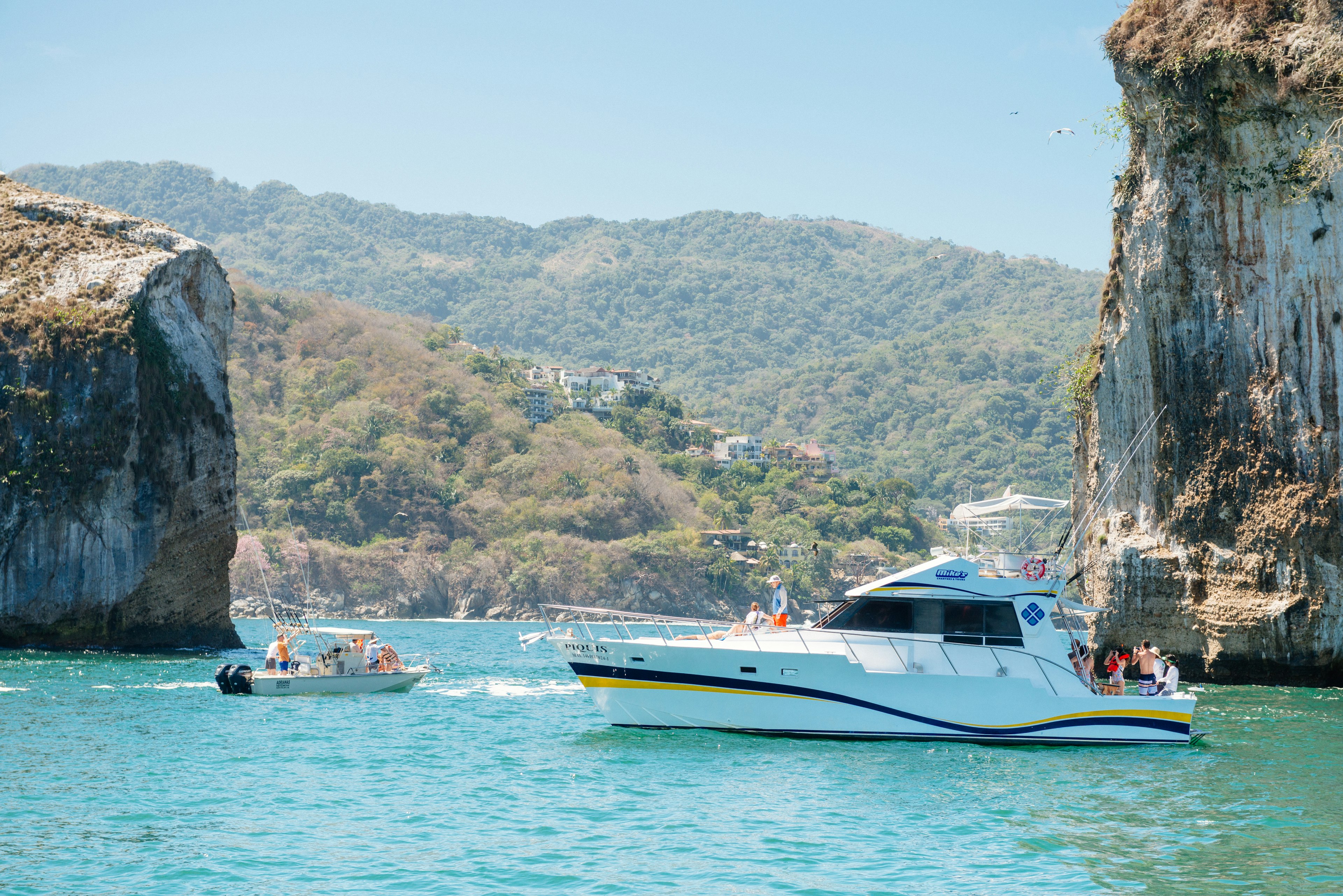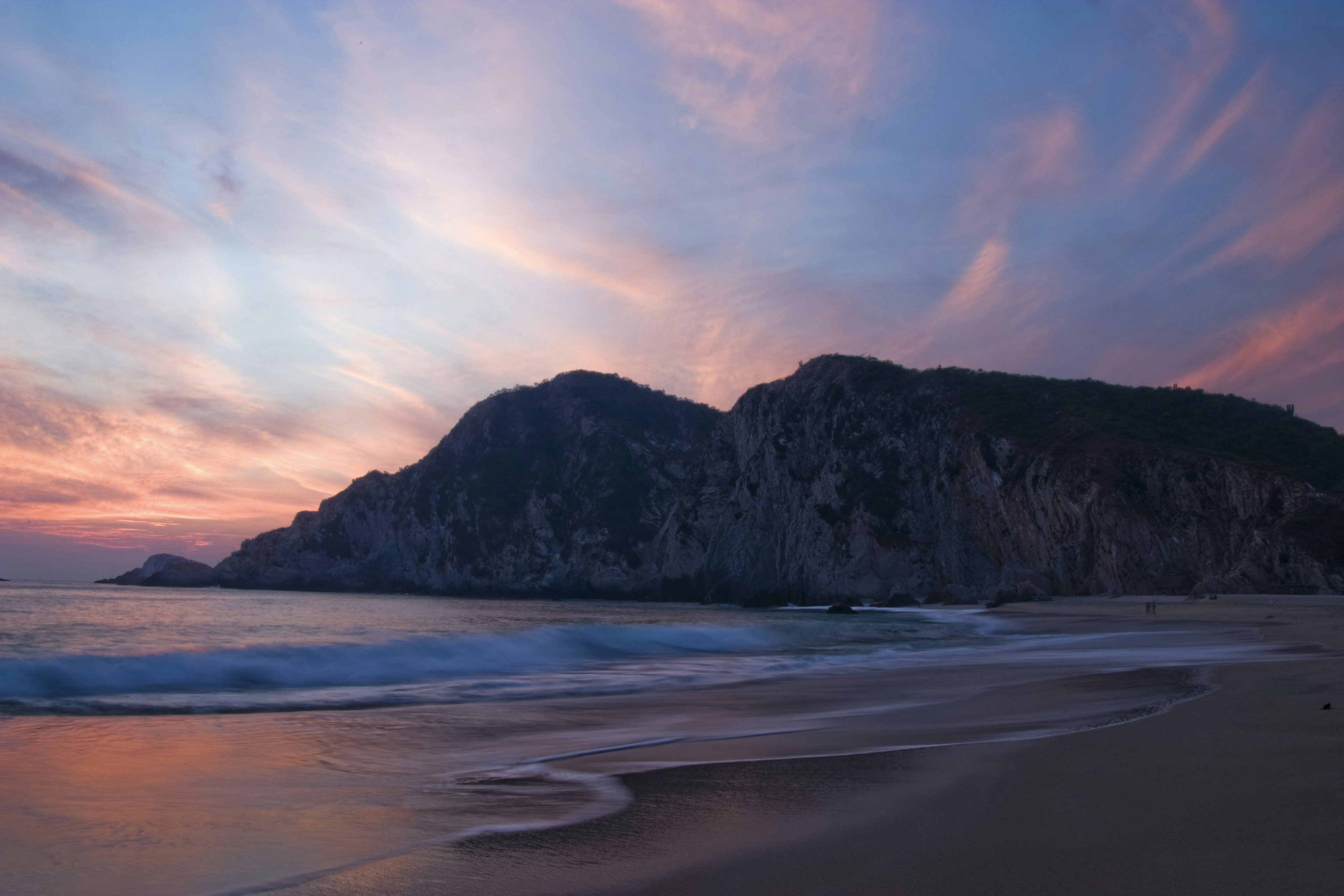
Beach boho vibes without the crowds: why we love Mexico's Central Pacific Coast
Nov 23, 2021 тЂ 5 min read

Puerto Vallarta in Jalisco, Mexico is a coastal city with refined, retro appeal ТЉ diegograndi / Getty Images
With less-crowded beaches and palm-lined cobblestone paths, Mexico's Central Pacific Coast is an off-the-beaten-track traveler's dream.
Loosely defined, this western stretch of Mexico's coastline starts around ВбВЙГњВЙГйБєУЁВд in Sinaloa and curves its way along craggy coastlines through a handful of premier resort towns and a stunning array of under-the-radar beach towns before coming to an end in Zihuatanejo.

While the towering new builds of the Riviera Nayarit beckon to those in search of a bit of luxury and Puerto Vallarta offers upscale services with a refined, retro appeal, this coast is still a surfer haven at its heart. Go in search of a deserted beach to pitch your tent or find a boutique resort where you can practice yoga on the deck. Sit in a plastic chair with your toes in the sand while sampling the sublime seafood. Most of all find your way into the water. From small rollers in protected coves to world-class surf breaks, from dolphins leaping through the water to humpbacks breaching on the horizon т this is the laidback beach trip you've been looking for.
Nayarit
If one word were to sum up Nayaritтs vibe on the Central Pacific Coastline, it would be тhippieт. Nestled among the on-the-rise resort enclave of Nuevo Vallarta (which encompasses the Punta Mita peninsula) is a smattering of small beach towns oozing with down-to-earth coastal relaxation. Check out San Pancho (aka San Francisco) and its palapa-roofed waterfront bars and jungle-backed beaches. Or head to the tiny former fishing village of Chacala, sure to charm even the most cynical beachgoer with its deserted shores and snorkeling.
The larger San Blas will impress surfers with its literally record-breaking waves at Playa de MantanchУЉn, while birdwatchers will be enthralled by the endemic species residing in the nearby La Tovara Nature Reserve. Meanwhile, families will fall head over heels for super swimmable Playa Platanitos and its jewel-toned waters.

For a little more action, make your way to Sayulita, perhaps the best known of all Nayaritтs largely underrated beach towns. A true surf-by-day, party-by-night destination, the small pueblo has undeniably succumbed to a growing swell of tourism in recent years, but the tourists т both international and domestic т can be easily evaded by retreating to the townтs virgin beach, Malpaso, or nearby Compostelaтs Las Cuevas. Or join in the fun at the many bars and restaurants that have popped up in town.

Jalisco
The semi-urban sprawl of Puerto Vallarta sits at the heart of the BahУa de Banderas and is the most obvious attraction on Jaliscoтs chunk of Central Pacific coastline. Crawling into the mountains on one side and bleeding into the ocean on the other, Vallarta surrounds a historic center evocative of small-town charm, yet this hub is far from the only draw on Jaliscoтs coastline.
Take a water taxi from the spiral dock on Playa Los Muertos in Puerto Vallarta to the quaint Boca de TomatlУЁn. Alternatively, you could take a cliff-hugging bus ride remembering that half the fun is in the journey. While Boca de Tomatlan offers little in the way of attractions, it serves as the jumping-off point to a lightly strenuous coastal cliff walk that will have you scrambling over rocks and traversing several beaches, like the petite Majahuitas and popular Quimixto, along the way. The pot of gold at the end of the rainbow? Playa Las Уnimas, lined with a few restaurants as well as options for parasailing and banana boating.

Alternatively, skip the hike and hop on a water taxi to Yelapa, a pueblo that has made a name for itself as an inaccessible-by-land destination for fans of yoga retreats and boutique accommodation.
South of Puerto Vallarta along the Jalisco coast, Barra de Navidad offers the opportunity for a tranquil fishing retreat, while nearby Melaque т popular amongst domestic visitors т is better for families looking to entertain kids at the beach. We recommend nearby Playa CihuatlУЁn.
Colima
The stretch of coast in Colima may be small, but it still has an underrated beach town or two. CuyutlУЁn, with its black sand beach (that in reality is underwhelming charcoal), will still impress nature lovers thanks to a turtle sanctuary and swathe of mangroves just waiting to be explored, whilst further up the coast, Boca de Pascuales is popular amongst surfers but remains relatively untapped by other visitors.

ВбОБГІГѓДЧВЙГІУЁВд
If any part of Mexicoтs Central Pacific Coast has remained off the tourist radar, itтs the ВбОБГІГѓДЧВЙГІУЁВд stretch. The remarkably unexplored beach towns which dot the ВбОБГІГѓДЧВЙГІУЁВд coast are ideal for travelers wanting to escape the well-trodden paths of Jalisco to the north and Guerrero to the south.
PurУЉpecha village La Ticla stands out for its vast surfing potential (as does Nexpa), although even visitors who arenтt adept with a surfboard will enjoy the natural beauty of this underrated palapa-lined beach. On the other hand, the relatively unknown Pichilinguillo т admittedly more beach than town т and its still, turquoise waters will delight swimmers.
Bird watchers will be charmed by San Juan de Alima and its open expanse of sand populated by exotic birds. It may be among the most commercial of the ВбОБГІГѓДЧВЙГІУЁВд beach towns, but it remains relatively overlooked nonetheless, not unlike Colola to the south, which is best known locally for beautiful handicrafts and turtle sanctuaries.
Finally, for true peace and quiet on the ВбОБГІГѓДЧВЙГІУЁВд shoreline, nowhere rivals Maruata, with its natural pools and near-virgin beaches sandwiched between the craggy coast and azure waters of the Pacific.

Guerrero
The final stretch of the Central Pacific Coast cuts into Guerrero before coming to a sharp halt at the town of Zihuatanejo. Zihua (as the locals call it) may well be amongst Guerreroтs most popular coastal hideouts, yet it retains a quaint and generally untouched air, complete with cobbled streets and seafood options galore. However, there is another far lesser-known option to explore: Troncones.
Just 40 minutes away, Troncones has been quietly establishing itself for a few years as a retreat destination that maintains more local charm than even Zihuatanejo. Along the 5km stretch of Troncones coastline, on which there are several virgin beaches, youтll also find caves and natural swimming pools, the latter of which are far preferable to taking a dip in the rough ocean seemingly made for surfing fanatics.
You might also like:
Mexico's 10 best beaches
Mexico's best off-the-grid-beaches
Where to find cenotes - Mexico's amazing natural swimming holes
Explore related stories









